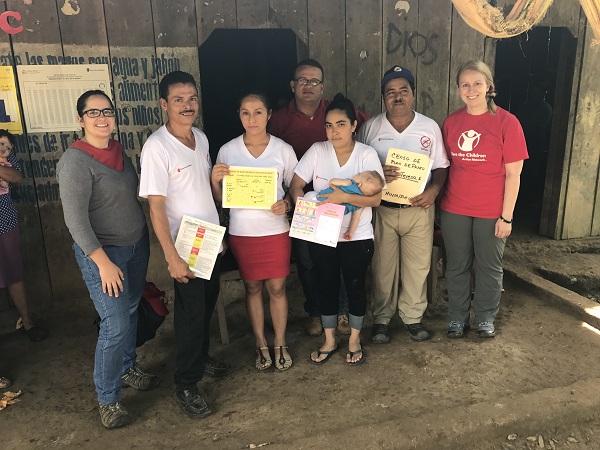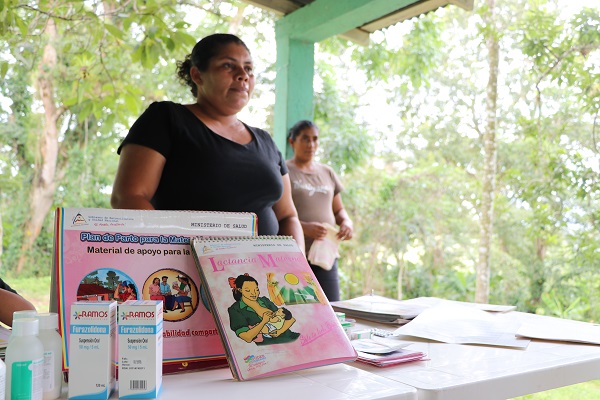 Nicaragua
Nicaragua
Languages
Save the Children is working to end preventable deaths of mothers and kids
Written by Allie Wright, media and communications manager at Save the Children Action Network, a graduate of the University of Iowa.
America’s high-quality medical care is a gift — one to which I owe my life.
I was born in Des Moines with a serious illness, but nurses and doctors at Blank Children’s Hospital were able to correctly diagnose and treat me.
I have always known I was fortunate, but a recent visit to Nicaragua further opened my eyes to the lack of health services available to women and children living in extreme poverty.
Nicaragua is the poorest country in Central America and the second-poorest in the Western Hemisphere. Approximately 20 out of 1,000 Nicaraguan children die before their fifth birthday. Twenty percent of kids across the country suffer from malnutrition, a number that increases to around 40 in more rural areas.
Fortunately, Save the Children is working there to help end preventable deaths of mothers and kids. In an effort to improve my skills as a communications professional at Save the Children Action Network, the political advocacy arm of Save the Children, I wanted to learn more about our global health programs. In August, I visited several Community Case Management programs across Nicaragua and saw how simple, inexpensive solutions save lives.
I met brigadistas, volunteer health workers who are based in communities across the country. They provide access to basic medication and supplies, such as acetaminophen, amoxicillin, and thermometers, help monitor children’s growth and development through monthly weighing sessions in partnership with the Ministry of Health, and much more.
The brigadistas provide critical data to the Ministry of Health. Some, through a Save the Children pilot program, use cellphones to provide health information in real time and facilitate transportation for families to local health posts or hospitals. In addition to medicine and medical equipment, the brigadistas use charts and other written materials to help with correct diagnoses, dosages of medicine and other information to help prevent disease.
Nothing these health workers do is complicated or expensive, but they are saving lives.
In fact, since the program began in 2007, no mother in the communities Save the Children serves has died from a preventable cause. This in a country in which 180 mothers die every year. The infant mortality rate has also decreased since the program began, despite the communities’ locations in extremely rural areas with very little access to transportation and technology.
In a small community high in the hills outside Leon, in the northwest corner of the country, Save the Children staff told me that if a pregnant woman needs to be transferred “quickly” to the hospital, several people must take turns carrying her down a large hill with uneven, windy dirt roads in a hammock. This journey can take six to seven hours. During my visit, we drove on these roads, and I can’t imagine being carried — for hours — while in pain and in fear for your life, as well as the life of your unborn baby.
But I spoke with many mothers in several communities who credit Save the Children and the brigadistas with helping their children survive such illnesses as pneumonia, fever, and diarrhea, as well as more serious illnesses, including tonsillitis and kidney infections. Without them, families wouldn’t have access to the life-saving, basic medicine that we can easily get at a drug store down the street here in the U.S.
And without the partnerships between organizations like Save the Children and the Ministry of Health, fewer mothers would survive pregnancy and childbirth.
Many of the sights on my trip were heartbreaking, like the pregnant 15- and 16-year-olds and families living in shacks no bigger than my living room. But I was inspired by the critical work Save the Children is doing and am hopeful because there is a way we can help from here in the U.S.

Allie Wright, on the right of the image, along with community health workers and Save the Children Staff in El Cuá.
A recently reintroduced bill in the U.S. Senate and House, the Reach Every Mother and Child Act, would focus on increasing access to the kinds of high-impact, evidence-based programs that save the lives of mothers and children around the world, like the ones I saw during my trip.
Please join me in encouraging Sen. Chuck Grassley, R-Iowa, to support this critical legislation as he has in the past and urge Sen. Joni Ernst, R-Iowa, to join him. I also urge all of Iowa’s representatives to cosponsor the legislation.
Too many mothers and children are dying, and we have the power to save their lives.
This article was originally published in The Daily Iowan, student newspaper at the University of Iowa.
